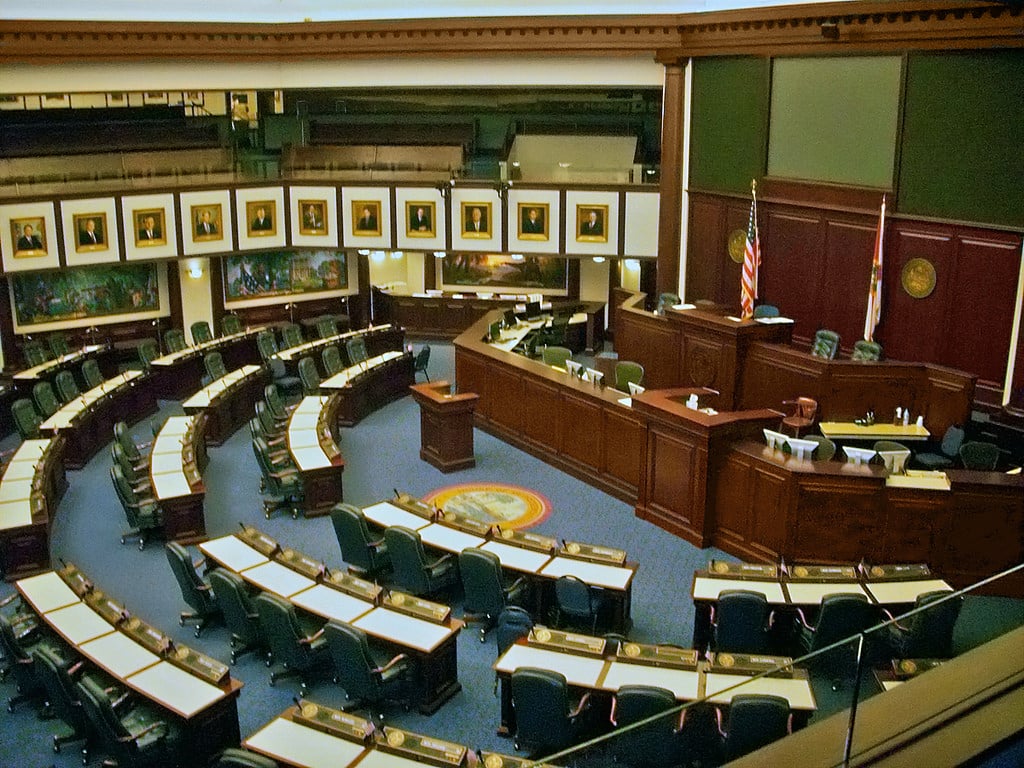
Welcome back to the Impact Zone, Surfrider’s series dedicated to all things legislative session for Florida's ocean, beaches and waves. While the last committee week was dominated by the special session, this week legislators resumed with regularly scheduled presentations and continued to to hear, debate and move bills through committee. With one more committee week to go, we are counting down the days until the regular session kicks off on March 7th!
Committee Outtake
House Water Quality, Supply and Treatment Subcommittee
The focus of this week's meeting was water quality and supply and included presentations from Mote Marine Laboratory and the Florida Department of Environmental Protection (DEP). Mote's presentation included information about its red tide mitigation and monitoring programs, funded in part and implemented in coordination with the state. The presentation then shifted to marine ecosystems and Dr. Michael Crosby discussed Mote's coral and seagrass restoration efforts, including the proposed Seagrass Restoration Technology Development Initiative. While mitigation and restoration are certainly tools to address impaired water quality and degraded ecosystems, prevention is key. More can and must be done to ensure that we address the sources of pollution and impairment before they further harm Florida's precious ecologic and water resources.
Following the presentation from Mote, DEP staff presented on agency water programs, including the Blue Green Algae Task Force, Grant Programs, and the Biscayne Bay Commission. Highlights included:
- $741 million invested in state Wastewater Grant Program over last four years
- $300 million invested in Springs Grant Programs over last four years
- $45 million invested in Innovative Tech Grants for emerging technologies aimed at reducing impacts of freshwater harmful algal bloom blooms
- $53 million invested in the Biscayne Bay Grant Program over last four years
- Establishment of Blue-Green Algae Task-Force and Biscayne Bay Commission
It is clear that there have been significant recurring commitments by the state to fund water quality programs, necessary investments as the state's population of 22 million people continues to grow, and visitation to Florida hits historic levels. Funding is a critical piece of the water quality picture, and yet only a small fraction of the Blue-Green Algae Task Force recommendations have been implemented as outlined in the task force's initial consensus document. The funding and efforts in recent years are a tremendous foundation upon which the state must built to ensure clean water for all Floridians.
Agriculture, Conservation & Resiliency Subcommittee
This week's presentations were focused on invasive species and resiliency. First, the Florida Fish + Wildlife Commission gave an overview of land and water based invasive species, including the state's programs aimed at Burmese pythons and lionfish. While species continue to proliferate, the agency continues to test new and innovative methods for prevention and removal.
Topics then shifted from wildlife to ecosystem with a presentation on the programs and purview of the Florida Department of Environmental Protection's Office of Resilience and Coastal Protection. Given the 825 miles of sandy beaches and millions of acres of aquatic and coastal resources in the state, there is no shortage of work to be done by the this office. A sizable segment of the presentation focused on the newly established Office of Resilience and the robust appropriations invested in resilience, including:
- $971 million invested in Resilient Florida Program and Flooding and Sea Level Rise Resiliency Plan
- $40 million invested in Planning Grants
- $4 million invested in Regional Resilience Entities
- $23 million invested in Coral Restoration and Protection
- $21.2 million invested in Resilient Florida Program
- $13.3 million invested in Resilient Florida Coastline Initiative
- $5.5 million invested in Flood Hub
- $3 million invested in Reef Protection + Tire Abatement
It should be noted that approximately half of the funds awarded for the Resilient Florida Program implementation grants to local governments come from federal grant programs. This state-federal funding relationship will help prepare Florida's communities for a more resilient future.
Also facilitating a more resilient future is the state's emphasis on green infrastructure. The department recognizes that nature-based solutions are efficient and cost-effective solutions to mitigate flooding and sea level rise. As the program has Resilient Florida program has rolled out, it has awarded 37 nature-based projects totaling $57 million, nearly doubling in less than two years. The value of nature-based solutions and green infrastructure cannot be undervalued, and there were great exchanges between members and staff highlighting the challenge of permitting for projects that provide the greatest benefit to ecosystem and community. We look forward to hearing more from the agency in months to come regarding efforts to streamline permitting for nature-based solutions and ecosystem restoration projects.
Select Committee on Hurricane Resilience & Recovery
Our favorite way to wrap-up another committee week, the Select Committee on Hurricane Resilience & Recovery heard presentations focused on post-storm recovery. With the Department of Economic Opportunity and the Florida Housing Corporation continuing to direct funds to impacted communities, it puts into perspective the magnitude of damages that natural disasters like hurricanes can confer to our human and built communities. It also underscores the urgency of the Resilient Florida program and the urgency with which the state must prepare and adapt for an uncertain climate future.
The committee also heard about recent response efforts following Hurricanes Ian and Nicole, highlight the funding awarded to assist local governments and communities in the aftermath of the storms. Disturbingly, this also includes the Hurricane Restoration Reimbursement Grant Program, which provides $50 million of funding directly to homeowners who experienced beach erosion from the storm and completed an eligible sand placement, temporary or permanent armoring project. Funding for homeowners rather than local governments removes a level of oversight and scrutiny necessary to protect our coasts from the harms of hard armoring and ensure that the state's coastal management policies are upheld.
With only one more committee week to go, we cannot believe that the time for session is almost here! Stay tuned for next week's installment of the Impact Zone.
